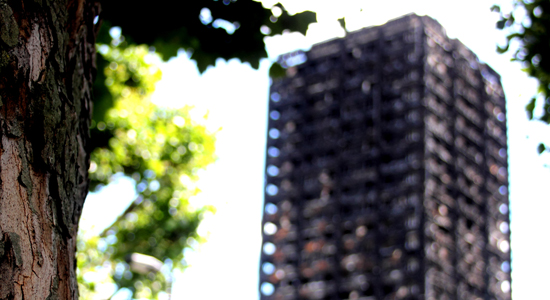Grenfell Tower
On 14th June 2017 a small fire in a kitchen believed to have started in a refrigerator in a flat in Grenfell Tower developed into what has been called the deadliest fire disaster in the UK since World War II.
At the time of writing this, it had caused 72 deaths and over 70 injuries. Occupants of 23 of the 129 flats died.
Whilst some were fortunate to have escaped and survived, the psychological impacts of such a horrific incident are likely to remain with them indefinitely.
So, what caused the fire?
Shortly before 1am, the resident of the flat where the fire began on the 4th floor was awoken by the sound of a smoke alarm, he called the fire brigade before evacuating.
The fire is believed to have come from a fridge freezer in the kitchen and spread through gaps in the window frame igniting the insulation cladding on the outside of the building which spread around the building.
It has been reported that among other things doors around the tower were not able to resist fire as long as had been initially thought, there were concerns over alarms not being audible to all, fire safety equipment had not been serviced as it should have, and there have also been questions over the way the incident was handled which are still ongoing even now.
There were no sprinklers fitted, which although new tall buildings are required to have, there are no requirements for existing ones to retrospectively fit them, however since Grenfell Tower, the London fire chief has called for sprinklers to be retrofitted in all social housing towers.
Practical tips to help avoid such an incident happening again
This terrible incident is a timely reminder of ensuring adequate precautions have been taken to prevent, ensure safe evacuation, and impede the spread of fire should one occur. Here are some practical tips to help you:
- Ensure a thorough fire risk assessment has been completed detailing all risks of ignition, fuel sources, structural matters that may allow spread of fire. It must also take in to account the notification and safe evacuation of occupants in the building.
- Take care following the assessment to ensure actions are closed off in a reasonable timescale.
- Ensure regular checks of escape routes takes place to ensure they are effective and clear.
- Ensure your alarm system is effective and covers all areas where a fire could develop (particularly un-noticed such as a store room, ceiling void, mezzanine floor etc) and that it is tested in line with legal requirements weekly.
- Ensure the alarm can be heard by everybody – and there is provision for those with hearing difficulty (flashing beacons etc if required)
- Ensure there is an emergency procedure in place and everybody is trained on what to do and this is rehearsed regularly – the frequency of which would be determined by your risk assessment (legally a minimum of six monthly). Quest offer fire warden training courses to support this.
- Fire escape doors must easily open in the direction of escape (i.e outwards) and lead to a place of safety.
- Escape routes must be adequately lit and directional signs installed. Emergency lighting must be tested regularly to ensure it remains functional.
- Fire resistance of fire doors should be confirmed (data from the manufacturer / installer) and ensure intumescent strips are in place and without deterioration. (there are to act as a seal around the door to impede smoke spreading)
- Buildings should where possible be “compartmentalised” which means that if a fire starts in one area there are structural features helping to inhibit the spread to another room (or “compartment”).
- Ensure checks / maintenance of equipment does not get missed, this includes things like PAT testing.
- Do you have sufficient firefighting equipment (extinguishers etc) and do your employees know how to use it?
- Have you thought about contractors / visitors? Are they aware of what to do & were to go?
- Flammable chemical substances should be appropriately stored when not in use within a fire-resistant storage cabinet.
- All fire safety equipment must be maintained / serviced regularly.
What we can do for you
Let us help you – we can conduct a fire risk assessment for you and help you put plans in place to protect the people in your premises, and your business. We can audit your premises and provide you with a comprehensive action plan of recommended improvements to fulfil your responsibilities under current legislation.
We have the health and safety experts and can offer training courses to upskill your people in fire safety and train them to become fire wardens. Contact us to discuss your requirements.






